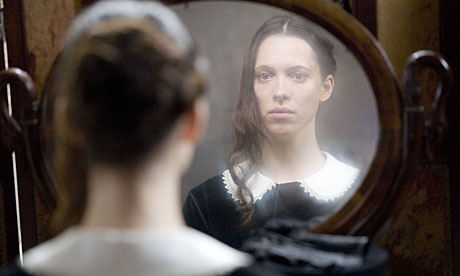It's also a good read. Here to introduce the text and the session on it is GRG organiser, Carly Stevenson.
Rhys’ novel, as a prequel to Jane Eyre and as a postcolonial narrative, gives a voice to the repressed, liminal figure of Antoinette Mason – the ‘Madwoman in the Attic’ of Brontë’s novel. Rhys gives Antoinette a history so that we may reassess her supposed ‘madness’ in light of a wider social and personal context: we learn of her early poverty, her mother’s dwindling mental state and the apparent cruelty of her native neighbours. We learn too that her identity perpetually isolates her from communities. A Creole heiress brought up in post-abolition Jamaica, Antoinette is cast out of Coulibri society from the start. Crucially, the first two sentences of the novel confirm her status as an outsider: ‘They say when trouble comes close ranks, and so the white people did. But we were not in their ranks.’ Belonging neither to the white Europeans nor the black Jamaicans, the Cosway family are stripped of their cultural identities and driven into exile, then eventually, driven out of their home. The tragic fire that forces the Cosways (now Masons) from their settlement eerily foreshadows the burning down of Thornfield in Jane Eyre and Rhys gives Antoinette’s story a cyclical quality that resonates with the theme of ‘inherited’ madness.
 |
| Rebecca Hall as Antoinette in the 2006 BBC adaptation |
Making connections: Jane Eyre, Wide Sargasso Sea and Rebecca
As some of you might already know, Rebecca is often described as an adaptation/reimagining of Jane Eyre. Thinking back to our last meeting, it is evident that Rebecca and Wide Sargasso Sea explore similar themes and motifs, not least of all the relationship between names and identities. In WSS, Antoinette is repeatedly defined by men: her name is changed multiple times in correspondence with her mother’s relationship status and her own marriage to the unnamed Englishmen, who the reader assumes is the young Rochester. Likewise, in Rebecca, the two Mrs DeWinters are repeatedly referred to in relation to their husband. However, Rebecca arguably takes this idea of namelessness/lack of autonomous identity a step further by deliberately not assigning the narrator a name at all. She is simply the ‘second Mrs DeWinter’.
Our next meeting will focus primarily on Wide Sargasso Sea and Rhys’ exquisite adoption of Gothic conventions, techniques and imagery to convey the complexity of mental illness. In preparation, here are a few questions that you might want to consider as you read the novel:
- Wide Sargasso Sea is often described as a ‘Postmodern novel’. How far do you agree?
- How does Rhys use ideas of wilderness/nature reclaiming the domestic space to enhance the Gothic atmosphere?
- To what extent is Wide Sargasso Sea a feminist reimagining of Jane Eyre?
With all of this in mind, we’ll be thinking about the role of the narrator, the question of identity and the value of reimagining/adapting Gothic texts in our next session TOMORROW in room A87, Richard Roberts Building from 4pm. As always, there will be cake, and Halloween-themed festivity. We look forward to seeing you there!
Recommended Further Reading:
Gilbert, Sandra M; Gubar, Susan, The Madwoman in the Attic: The Woman Writer and the Nineteenth-Century Literary Imagination (London: Yale University Press, 2000) 2nd edition
Carly Stevenson is a second year PhD student researching Gothic and Romantic conceptualisations of death. The lyrics to ‘Cemetery Gates’ by The Smiths pretty much sums up her work and interests.


This comment has been removed by a blog administrator.
ReplyDeleteThis comment has been removed by a blog administrator.
ReplyDeleteI was cured of CANCER with the used of natural herbs. I love herbs so much. Most times, injection and drugs are just a waste of time. I was cured 8 months ago, i suffered from CANCER for 3 yrs but with the help of Dr. JOSHUA herbal medicine, i was cured within few weeks of drinking the herbs he sent to me through courier delivery service. This same doctor also cured my Aunty from FIBROID, as soon as i heard she had FIBROID, i quickly refer her to Dr. JOSHUA and she was cured too after drinking his herbs. I have referred more than 15 persons to Dr. JOSHUA and they were all cured from their various illness. Have you taken herbs before?. You have spent so much money on drugs, injections, surgeries etc and yet you have no good result to show for it. Contact Dr. JOSHUA now, he is a herbalist doctor, i assured you of a cure if you drink his natural herbs. Dr. JOSHUA have herbs that cures Hiv Herpes, diabetics, asthma, hepatitis, HBP, STD, cancer, chronic, etc. Contact Dr JOSHUA through his Email address on: {dr.joshuaherbalhome6@gmail.com} or whatsapp him on +2347048515927 Please share the good news to other people once you are cured . .
ReplyDelete